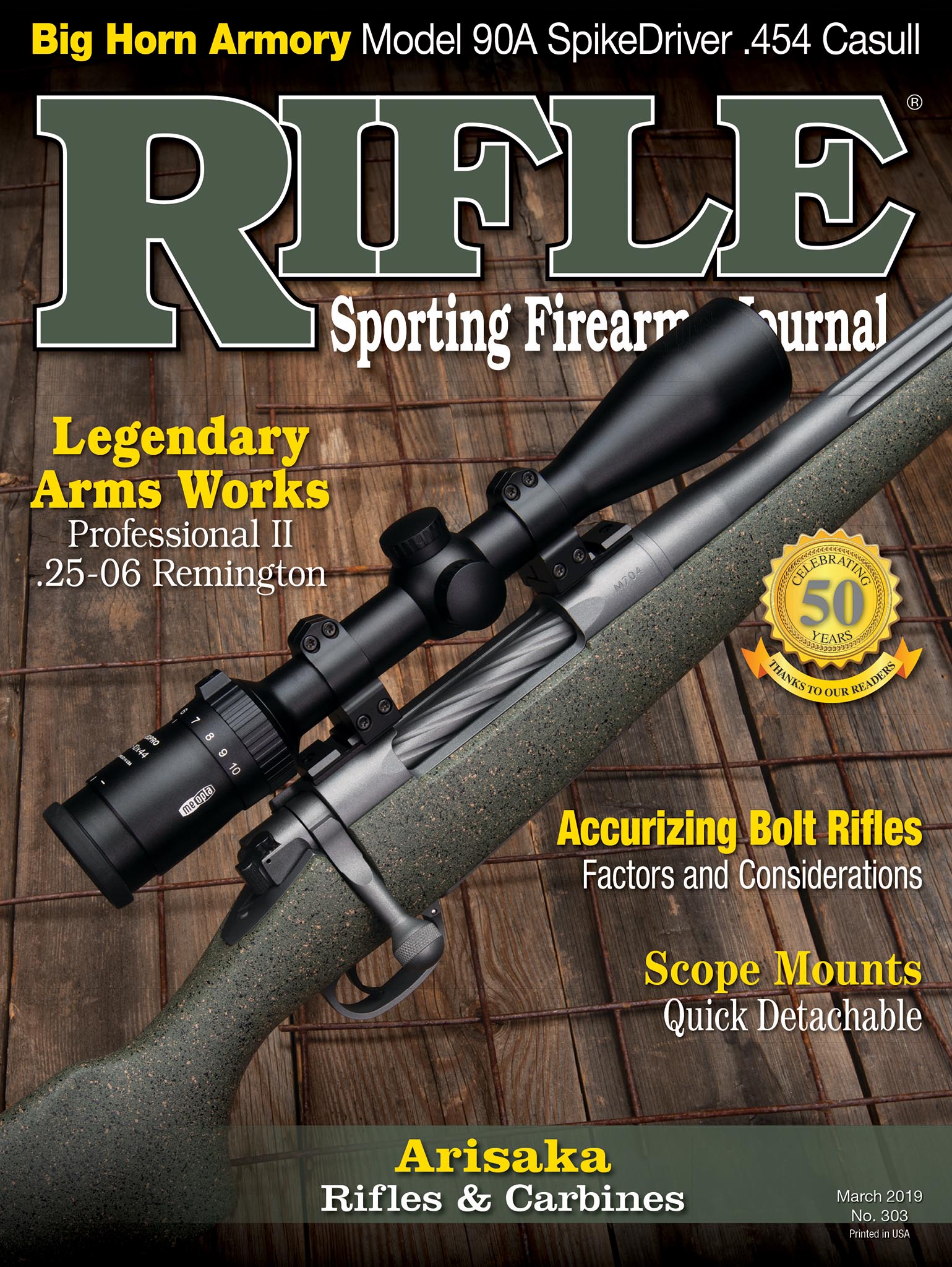A Rifleman's Optics
Ballistic Data Xchange Technology
column By: John Haviland | March, 19
Even for someone taken aback by the rows of puzzling buttons on a television remote, SIG Sauer’s Ballistic Data Xchange (BDX) Technology is easy to use. I was able to download the SIG BDX app to my iPhone to configure bullet ballistic profiles, transfer that information to a SIG KILO BDX rangefinder, and then to a SIG SIERRA3BDX riflescope that displayed an illuminated aiming dot that compensates for bullet drop and drift out to 800 yards.
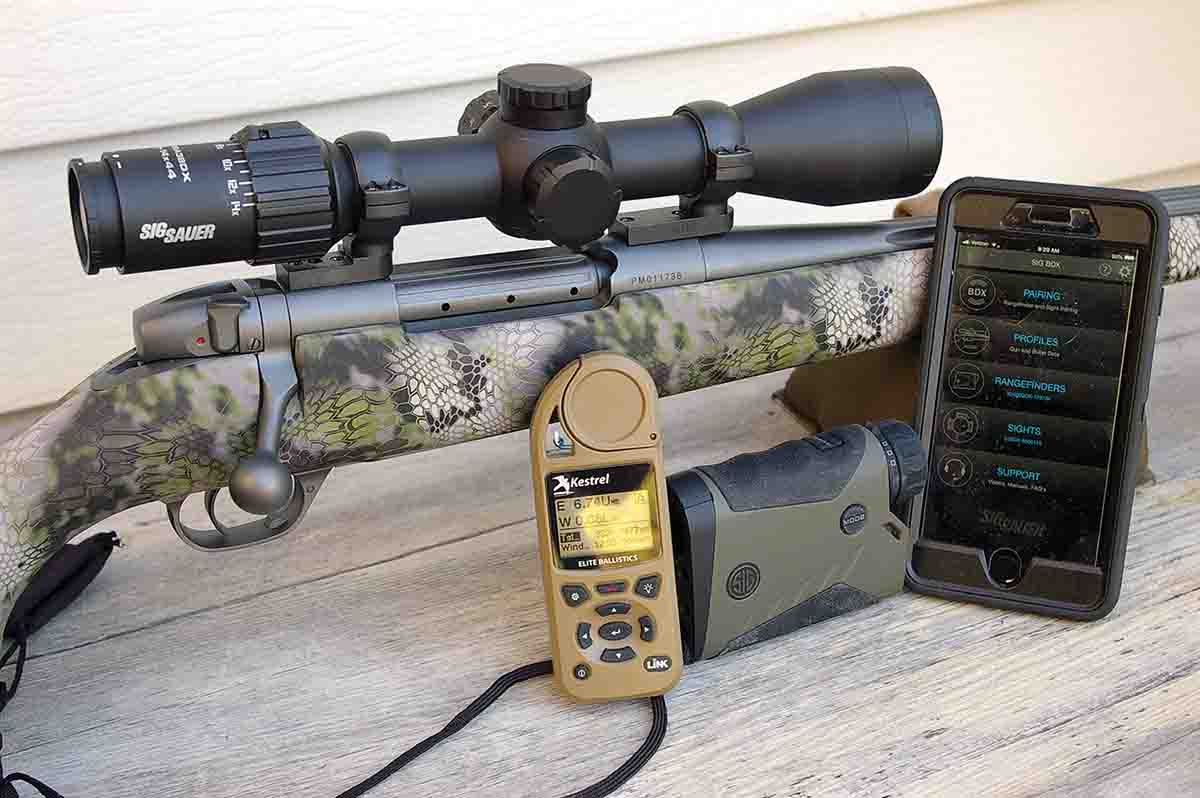
The BDX system uses a Bluetooth connection to send ballistic data collected with an Applied Ballistics Ultralight (ABU) ballistic calculator. Hundreds of different rifle bullets are listed on the BDX app, and ballistic profiles for up to 25 bullets can be stored in the free app and synchronized to a BDX rangefinder. With one profile active in the rangefinder, a distance reading can be taken, and a moment later, elevation and wind-hold information is displayed to compensate for the bullet’s drop and drift at that distance. A KILO rangefinder can also be used as a standalone unit. The KILO2400BDX ranges reflective objects up to 3,400 yards, trees up to 1,800 yards and deer to 1,400 yards.
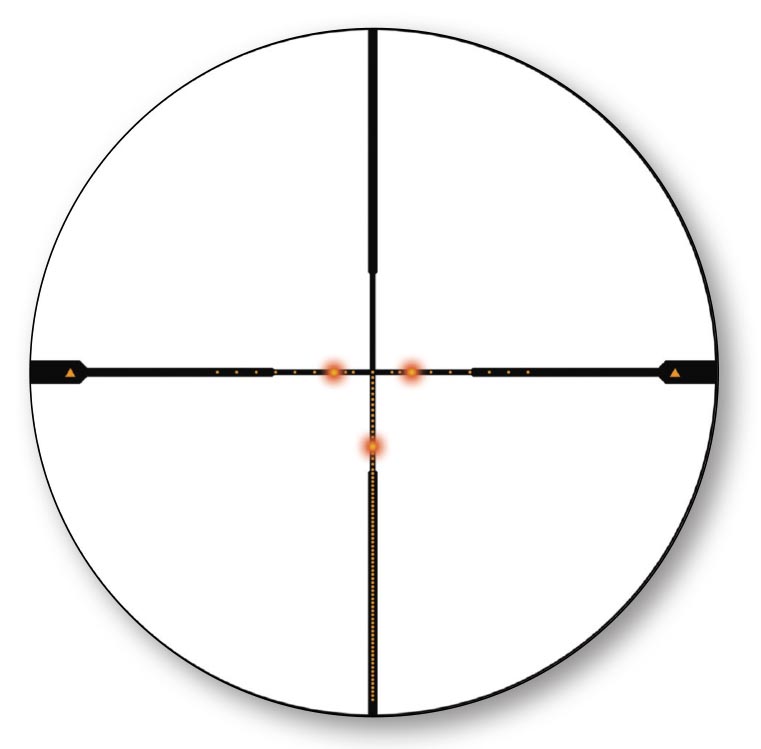
From the KILO’s Settings menu on the app, I selected the Applied Ballistics Ultralight (ABU) operation mode, best target mode, yards as a unit of measurement, sleep timeout of 120 seconds, a 5-mph wind from three o’clock and holdover/sight units in minutes of angle (MOA). My iPhone automatically pulled the local temperature and altitude information from the closest weather station; those two figures can also be manually entered. Pressing the BDX icon saved the settings.
Targets were stapled on boards at 100 and 300 yards at the local shooting range. The Weatherby began shooting right on aim at 100 yards after a few shots and turns of the adjustment turrets on the SIG scope. The 300-yard target was ranged with the KILO 2400BDX. The KILO indicated a distance of 296 yards, and a couple of seconds later a “+” (holdover) of 4.78 MOA and right hold of 1.12 MOA to compensate for a 5-mph wind blowing from the right.
That amount of hold seemed excessive. The reticle showed an illuminated dot part way down the lower vertical wire. The air was calm, so I ignored the wind correction and aimed with the dot on the target then fired three bullets. They hit 6 inches above aim!
I went back to the BDX app and discovered a much lower G7 BC was entered in the profile for the Ballistic Tip bullet. I corrected it and updated the profile. I shot three more bullets; two landed in the 4-inch target circle and the third a couple of inches to the left.
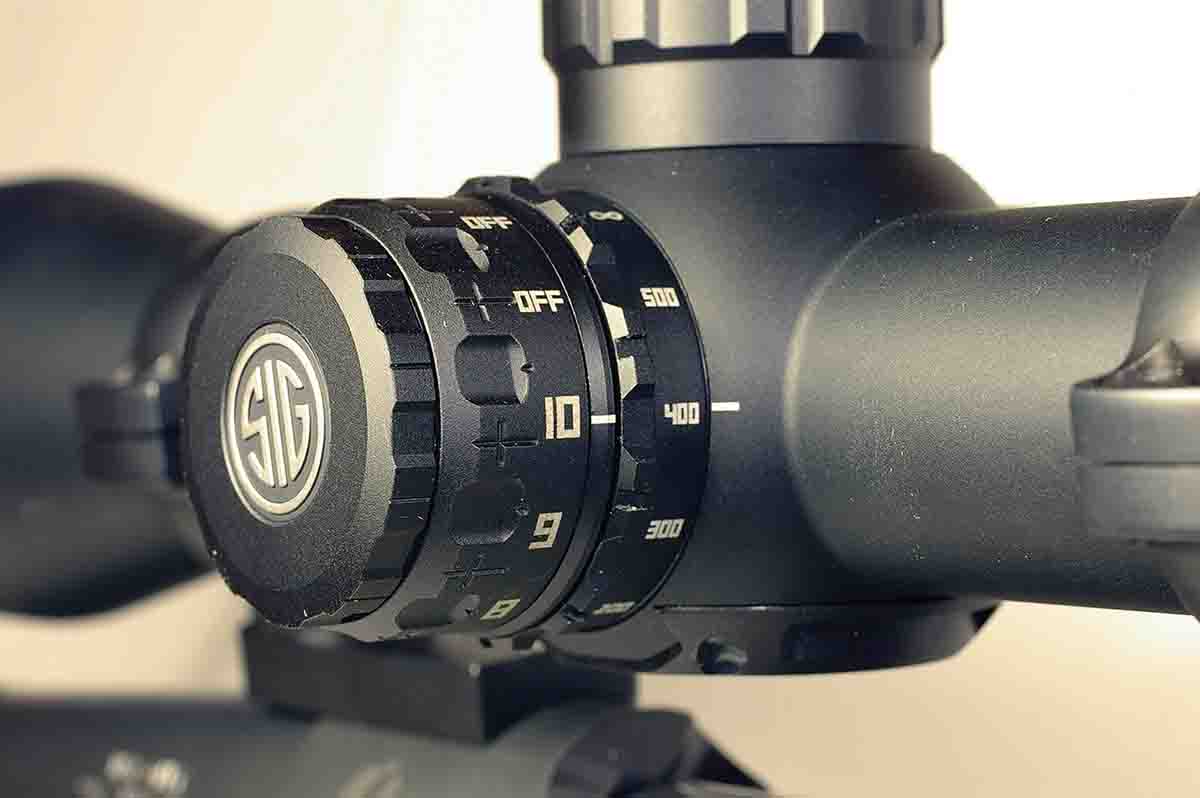
A few days later I took the two SIG electro-optics to a range in a draw in the sagebrush foothills. Everything was arranged and ready to go. I pushed the range button on the KILO rangefinder, and nothing happened. I had previously removed the battery because the KILO’s range button had been inadvertently pressed and held down in my gear bag, draining two batteries – the nearest store was 80 miles away. Luckily, I remembered there was a binocular under the car seat that used the same kind of battery, and I put it in the KILO.
The KILO registered a horizontal range of 458 yards to a steel plate. I ignored a slight wind blowing straight up the draw. In the scope, a small illuminated arrow at the right end of the horizontal wire pointed to the left to indicate the scope was canted to the right. I slightly rotated the rifle to the left, and the arrow disappeared. I placed the illuminated dot on the center of the plate, and a couple Ballistic Tips rang it like a bell.

SIG’s SIERRA3BDX scope can be used independently of the KILO BDX rangefinder. A load’s ballistics can be transferred from the BDX app to the scope. Aiming dots in 100-yard increments light up on the lower vertical crosshair to aim from 100 to 800 yards. From the BDX app’s Sights header, each of the eight aiming dots can be turned on or off.
Ballistic settings can also be sent to only a KILO BDX rangefinder, and when a range measurement is taken, the holdover and wind drift numbers are displayed in the rangefinder and in the app.
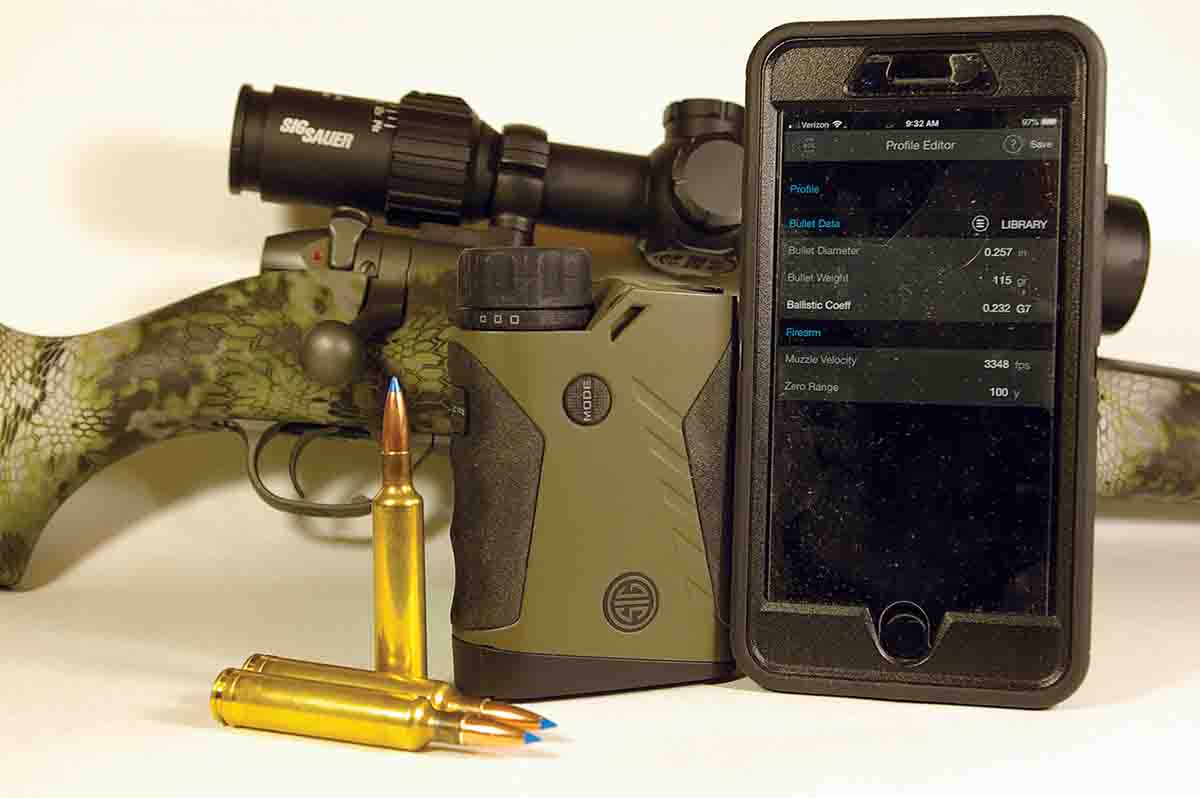
A KILO BDX rangefinder can also be paired with a Kestrel 5700 Elite Meter with the Applied Ballistics External (ABE) program to provide holdover correction well past 800 yards. Putting the KILO in ABE mode allows the Kestrel to connect to the KILO. I downloaded the Kestrel LiNK Ballistics app to my iPhone and selected K2400BDX from the menu, and the Kestrel and KILO were actively paired. Objects from 877 to 1,122 yards were ranged, and the KILO and Kestrel displayed ballistic holdover solutions for each distance. I never shot at those distances, because only 9 MOA of vertical adjustment remained in the scope after it had been sighted in. I was alone, too, and I would not have been able to see bullet impacts way out there anyway.
SIG Sauer’s BDX Technology certainly worked and enabled me to make first-shot hits on targets that would have normally required more than a little figuring and manually holding over, or dialing up turrets, to compensate for bullet drop and drift. I just have to remember the batteries.


